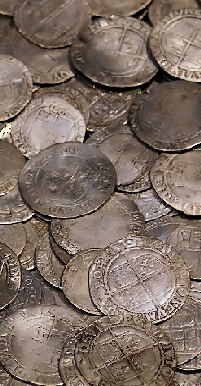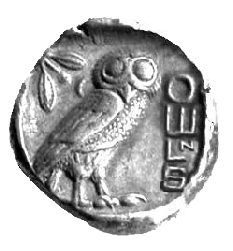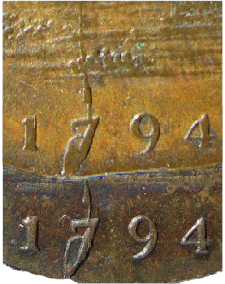
● Next Meeting Status:
Cancelled



● Host Society for the
BANS 2011 Congress
held in Southport


Where to next?

Revisiting Colchester -
Reviewing Dalton & Hamer’s Listing Of Essex 9 & 10
The gospel for 18th century token collectors is the work by Dalton and Hamer, published in sections at around the time of the first World War, and illustrating almost every variety. The listing is generally so good that it has never been rewritten or superseded, and after nearly a century there are only around twenty pages of additions and corrections to more than 560 pages in the original.

But it isn’t perfect, and errors are found from time to time. Our example concerns the halfpenny tokens issued in 1794 by Charles Heath, Bay Maker of Colchester. Dalton and Hamer list just two tokens for Colchester, with very similar designs, and both for Charles Heath. DH9 is described as ‘a view of Colchester castle. The castle does not extend to the edge of the coin, and a flaw runs down the centre of the die.’ DH10 is described as ‘a slightly different view of the Castle, carried out to the edge.’ Looking at the illustrations in the book, there appears to be only a general similarity between the two coins. The second shows the castle extending to the left edge, and an amount of greenery on each side which does not exist on the first. The conclusion which D&H reached is that there are two distinct dies.

But all is not what it seems. Figure 1 shows a pristine example of DH10, the coin with the extra wall and the greenery to the sides of the castle.
Fig 2 is a less than pristine, but nonetheless typical example of the other coin, DH9, with no wall, no greenery, and the prominent die flaw. The difficulty arises with the third coin, Fig 3, not listed by D&H, which shows quite clearly the wall, the greenery to the sides of the castle, from DH10 and the identical die flaws from DH9.

Looking closely at enlargements of the flaws passing through the dates, there can be no doubt that they are the same. So instead of two dies, slightly different, we have one die, in three states, slightly different. First is the die with the greenery and without the flaw. The second state shows the greenery, with the flaw, and the third state shows no greenery, and the flaw.
What happened to the greenery? I don’t know. Maybe it simply failed to strike up, possibly due to a reduction in striking pressure in order to conserve the die, or possibly the die was heavily worked on, with the same intention. It seems bizarre that significant parts of the design should effectively disappear, but an examination of the progressive wear on the die used for the reverse confirms this sequence.
None of the above appears in the original Dalton & Hamer, or in any of the additions and corrections which have appeared since. It’s nice to know that there are still things for the amateur to discover.
Chris Leather



Hover your cursor to
see the coins in detail
Fig.1
Dalton & Hamer
Essex 10
Fig.2
Dalton & Hamer
Essex 9

Fig.3
Dalton & Hamer
Unlisted
